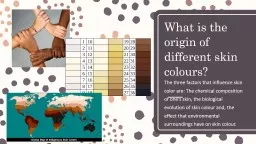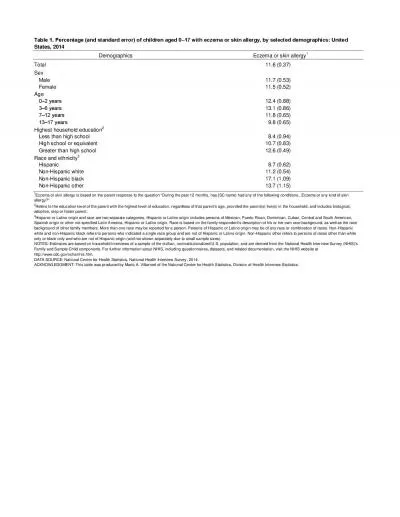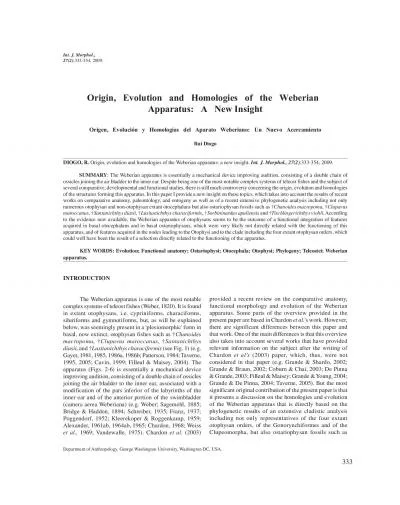PPT-What is the origin of different skin colours?
Author : tatyana-admore | Published Date : 2016-11-18
The three factors that influence skin color are The chemical composition of ones skin the biological evolution of skin colour and the effect that environmental surroundings
Presentation Embed Code
Download Presentation
Download Presentation The PPT/PDF document "What is the origin of different skin col..." is the property of its rightful owner. Permission is granted to download and print the materials on this website for personal, non-commercial use only, and to display it on your personal computer provided you do not modify the materials and that you retain all copyright notices contained in the materials. By downloading content from our website, you accept the terms of this agreement.
What is the origin of different skin colours?: Transcript
Download Rules Of Document
"What is the origin of different skin colours?"The content belongs to its owner. You may download and print it for personal use, without modification, and keep all copyright notices. By downloading, you agree to these terms.
Related Documents














